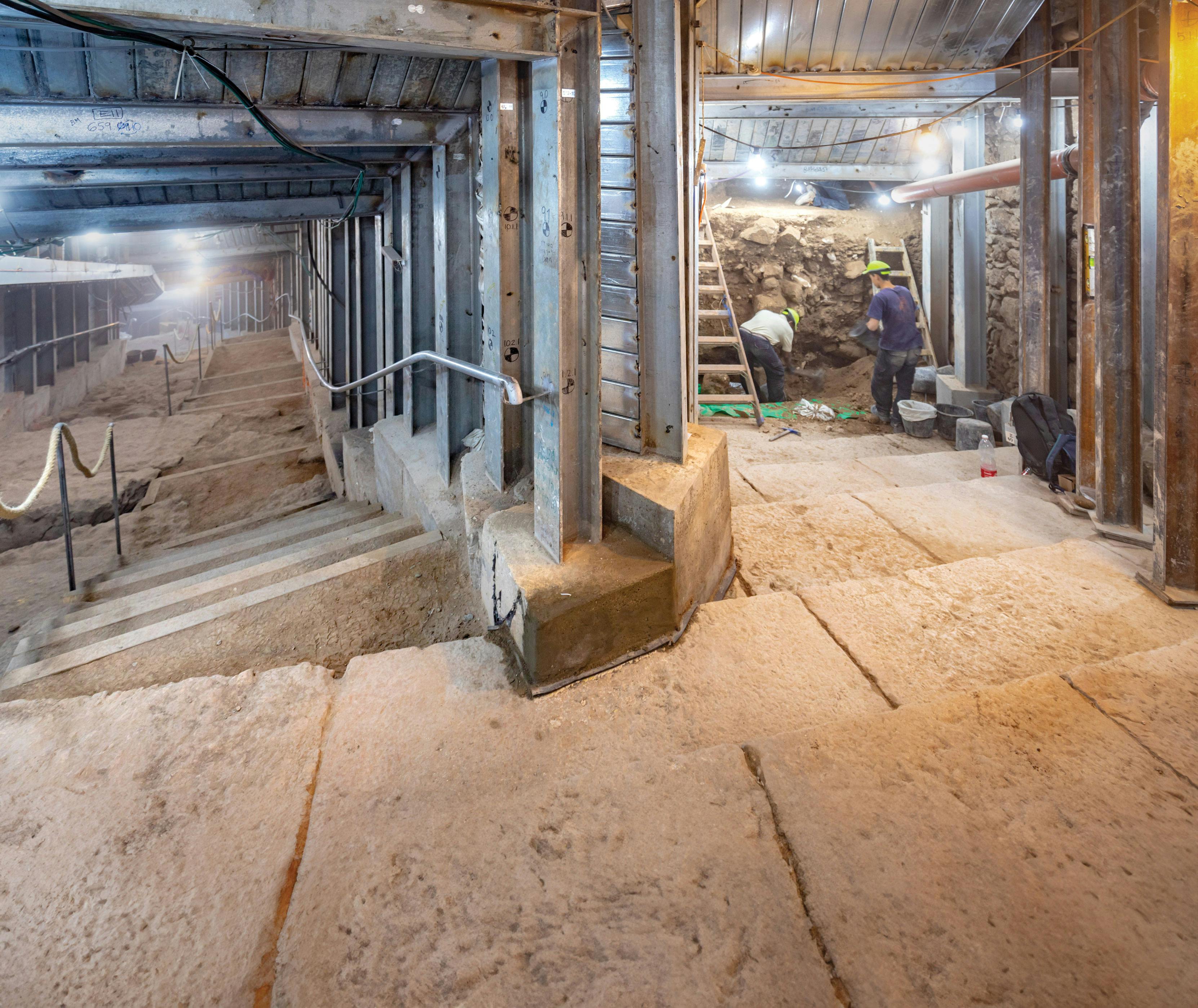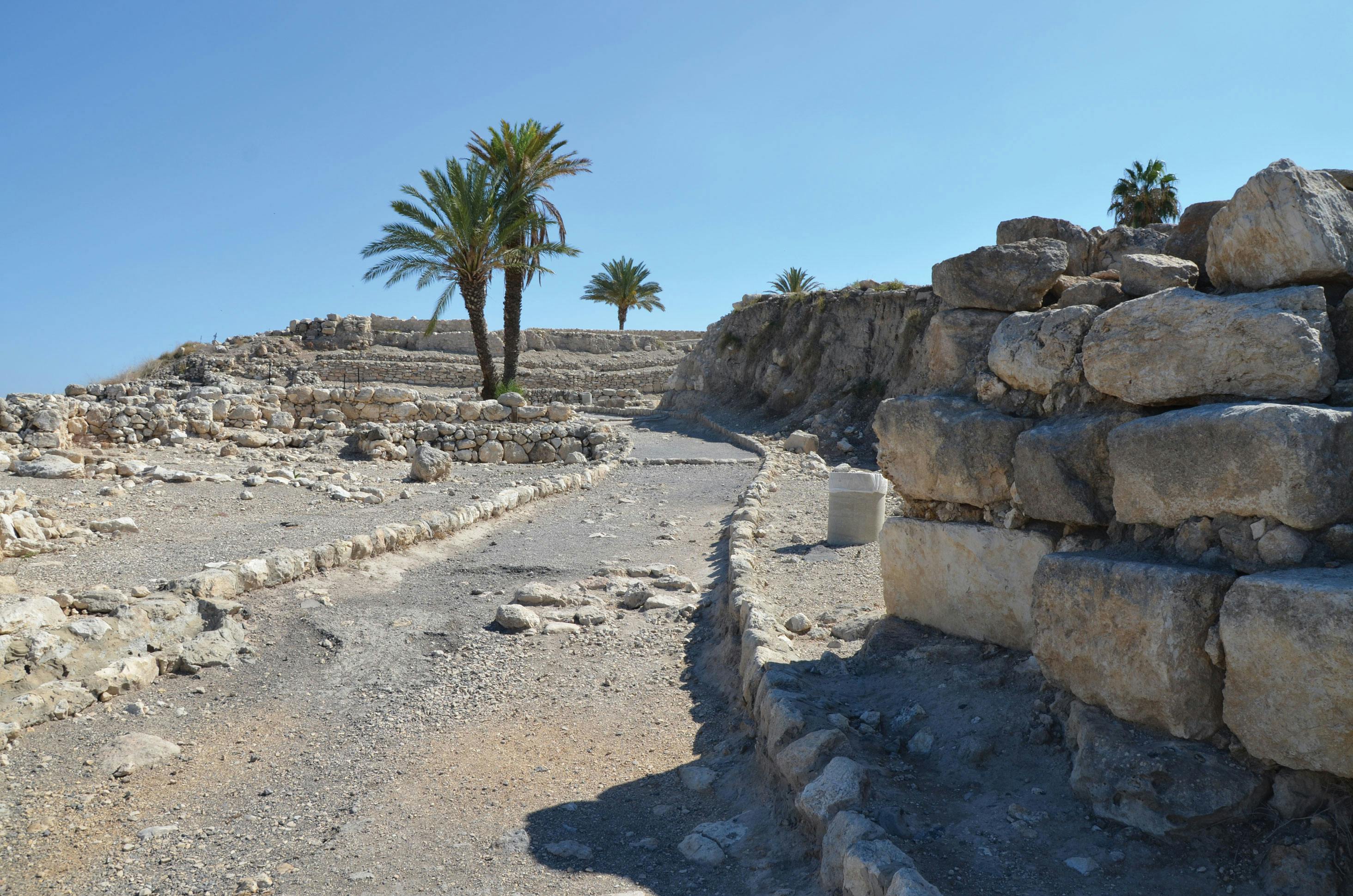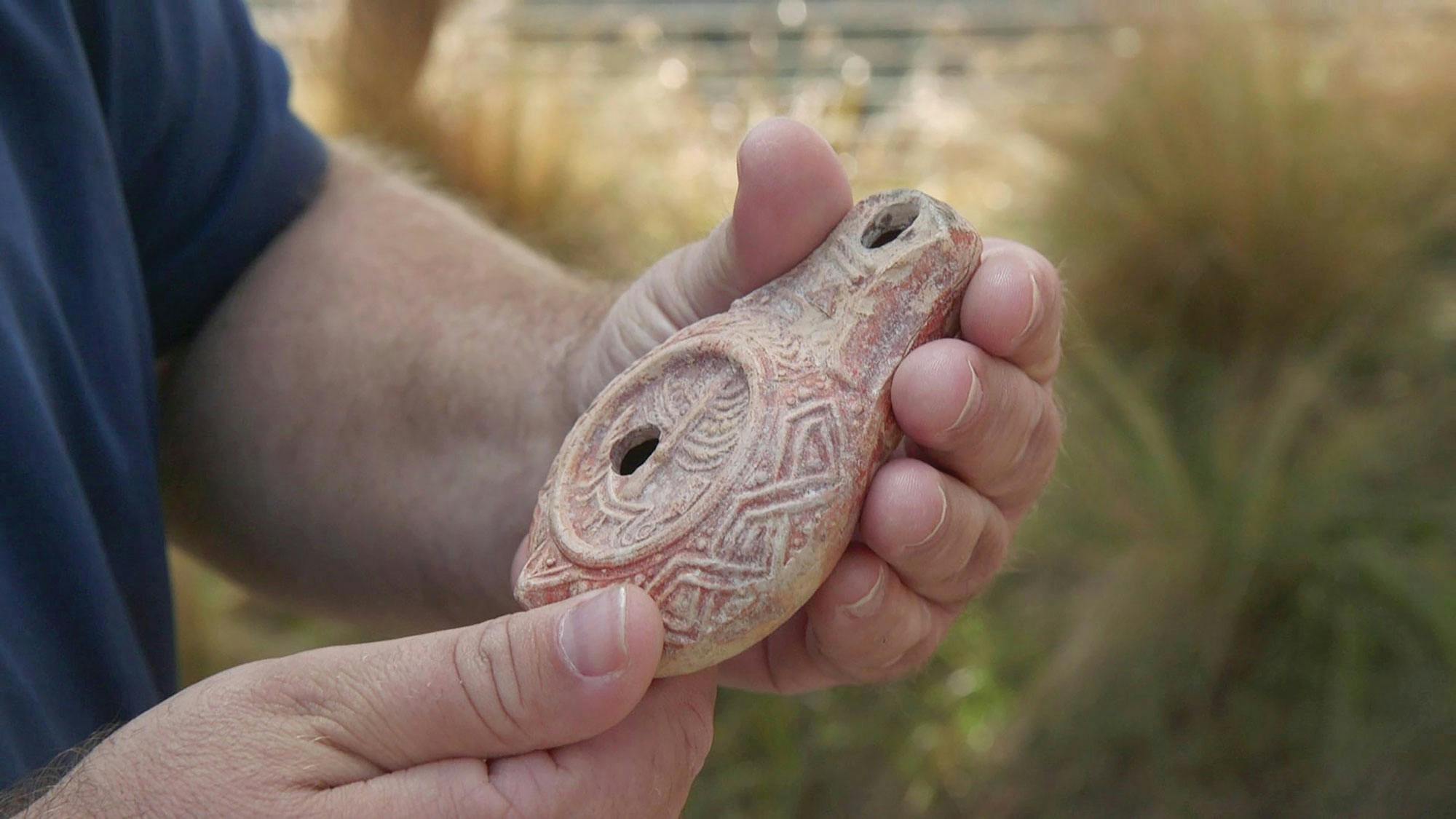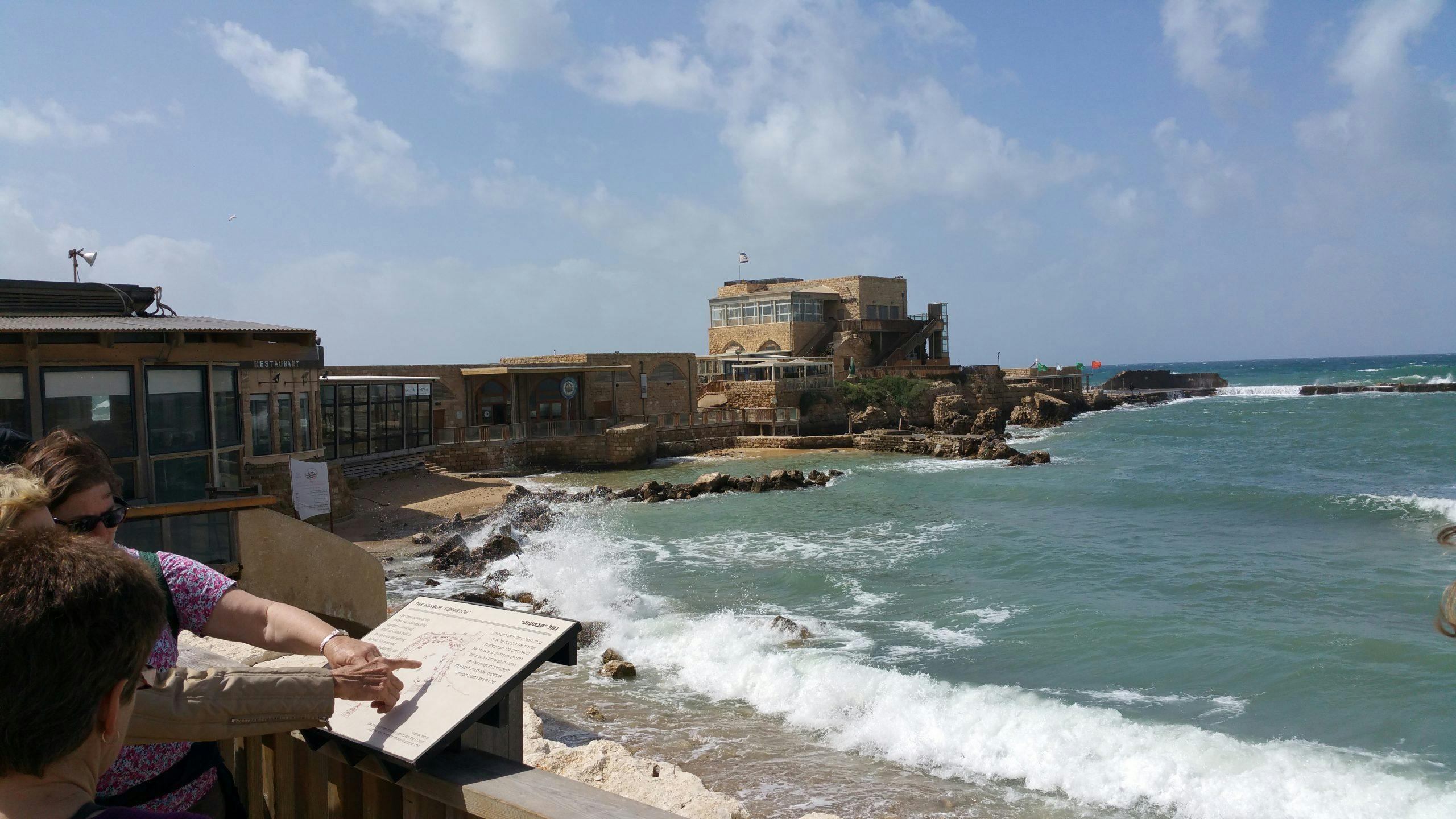Pilgrimage Road: Walking in the Footsteps of
Ancient Worshipers

In September, Israel celebrated a moment of tremendous religious significance: the reopening of the Pilgrimage Road in Jerusalem’s City of David. After years of excavation, the entire length of this ancient street—Jerusalem’s main thoroughfare during the Second Temple period—can now be walked from end to end for the first time in 2,000 years.
Stretching roughly 600 meters (1,970 feet) from the Pool of Siloam up through the Tyropoeon Valley to the Temple Mount, the broad stone road once carried throngs of Jewish pilgrims. Here they purified themselves in ritual baths before ascending to the place the Bible calls the dwelling of God’s presence.
A Celebration of Faith and Heritage
The unveiling was marked with a festive ceremony attended by Prime Minister Benjamin Netanyahu, US Secretary of State Marco Rubio, US Ambassador Mike Huckabee, the Mayor of Jerusalem and other dignitaries. For Israel, it was a celebration of archaeology, history and identity, a moment that connected the biblical past with the living present—a reminder that God’s promises endure.
“Jerusalem is forever our city,” Netanyahu declared, vowing that it would remain united. Huckabee praised the excavation as a moment that “lets the stones speak,” calling the Pilgrimage Road evidence that “the Jewish people not only belong here now, but they have belonged here for 4,000 years, since the time God said to Abraham: ‘This is yours’” (Gen. 15:18).
Rubio, in Israel for meetings with Netanyahu and other leaders, described the road as “an extraordinary archaeological site” and framed his visit as a celebration of shared heritage. On X (formerly Twitter), he called the road “an enduring cultural and historical bond with Jerusalem and a powerful reminder of the Judeo–Christian values that inspired America’s Founding Fathers.”

Huckabee likewise noted that those attending the ceremony were the first in two millennia to make the pilgrimage on foot from the Pool of Siloam to the Temple Mount.
The Marketplace of Ancient Jerusalem
The Pilgrimage Road was first discovered at the Pool of Siloam, located at the base of the City of David just south of today’s Old City. Archaeologists believe it was built during the governorship of Pontius Pilate, though it was once attributed to Herod the Great. Either way, the road was completed in the very years when the Bible teaches Jesus (Yeshua) taught and healed in Jerusalem.
The stepped stone street—approximately eight meters [8 yd.] wide—was more than just a walkway. It was Jerusalem’s central marketplace. Along its length, archaeologists uncovered coins, stone weights and a measuring table, pointing to the life and bustle of commerce. Pilgrims would have bought oil, spices and animals for sacrifice as they journeyed upward to worship. It was, in essence, the local mall of its day, alive with noise, fragrance and anticipation.
Beneath the road, excavators uncovered an ancient drainage channel. During the Great Revolt against Rome, Jewish rebels and residents hid in desperation within its dark confines. There archaeologists found cooking pots, oil lamps, hundreds of coins and even a Roman sword—poignant relics of Jerusalem’s final days before its destruction in 70 CE.
Stones that Cry Out
For centuries, much of the Pilgrimage Road lay hidden beneath layers of earth and rubble. Portions were opened in earlier years, but now, after years of painstaking excavation led by the Israel Antiquities Authority and the City of David Foundation, the entire length has been revealed. Visitors today can begin at the Pool of Siloam, descend the steps where pilgrims once washed, and ascend the full length of the road to the Temple Mount.
For Christians, the significance cannot be overstated. This is not an abstract history lesson—it is a place where the Bible and archaeology converge. To tread this path today is to walk where Jesus would have walked, where His disciples and countless worshipers lifted their eyes toward the Temple. The Gospels tell us that Jesus healed a blind man at the Pool of Siloam (John 9:7). From there, He would have ascended this very road toward the Temple Mount.
Luke 19:37–40 records that as Jesus entered Jerusalem, crowds of disciples rejoiced with loud voices, praising God. When Pharisees urged Him to silence them, Jesus answered: “I tell you that if these should keep silent, the stones would immediately cry out” (v. 40). On the Pilgrimage Road, the very stones cry out still—witnesses to God’s faithfulness, the endurance of His people and the reality of the biblical account.
Why It Matters Today
The Pilgrimage Road is not simply about uncovering stones; it is about uncovering a story that continues to shape the world. For Jewish people, it testifies to their ancient and unbroken bond with Jerusalem, the city God gave to Abraham’s descendants. For Christians, it strengthens our faith by grounding it in real places and events. Jesus did not minister in myth but in history, and His footsteps can be traced on this road.
Psalm 48 celebrates Jerusalem as “the city of the great King.” To walk the Pilgrimage Road today is to step into that psalm, to glimpse the joy of ancient worshipers ascending with songs of praise, and to recognize the continuity of God’s covenant purposes. It is also to remember that the story is not finished. The prophets spoke of a future when nations would stream to Jerusalem, when the Word of the Lord would go forth from Zion (Isa. 2:3).
Related Resources

Discover Your Purpose and God’s Heart For You
In today's divided, turbulent world, it's essential for the Church to rediscover God's heart. Our free e-book, authored by a seasoned expert with three decades of experience in Israel, delves deep into the teachings of Jesus (Yeshua) to reveal God’s principles of love and purpose. Learn how embracing these truths can bring significance and impact to your life, even amidst chaos. Subscribe now to receive your free copy and embark on a journey of transformation.




